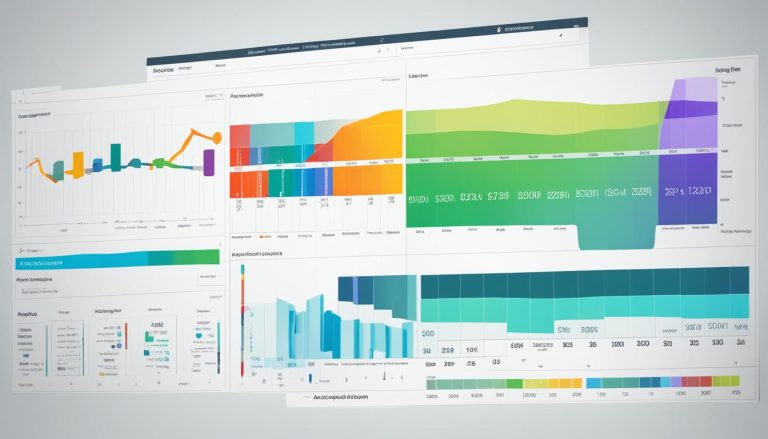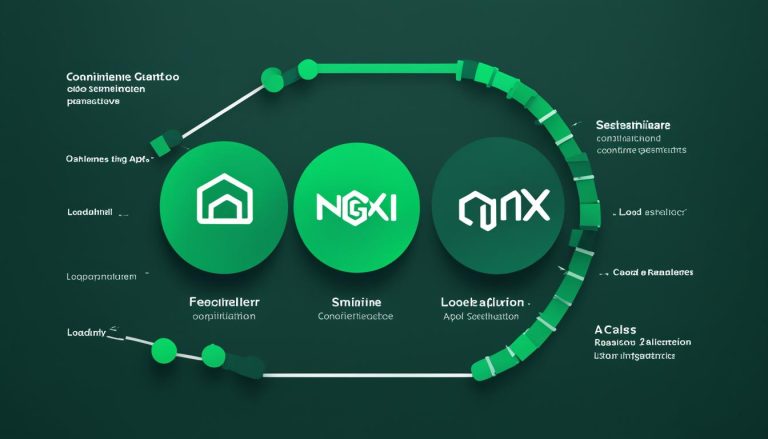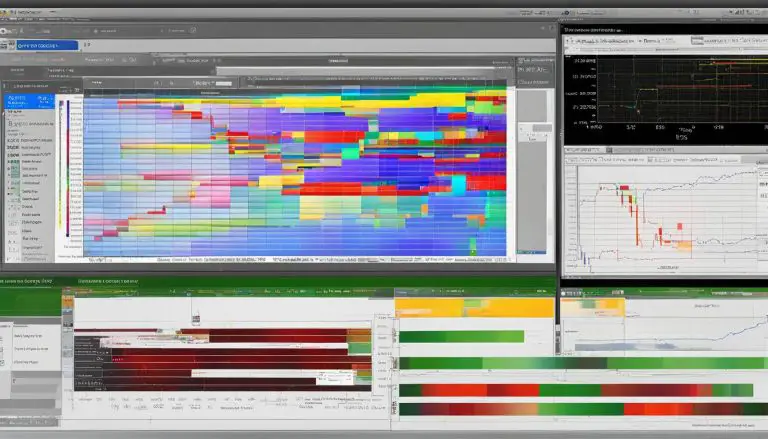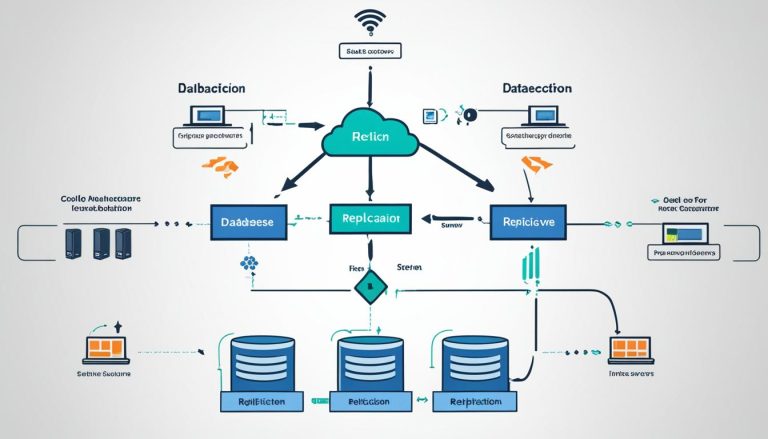What is MariaDB: Open-Source Database Explained
MariaDB is an open-source database management system that serves as a compelling alternative to MySQL, providing businesses with powerful features, excellent performance, and enhanced scalability. With its compatibility with SQL, MariaDB offers a seamless transition for organizations already familiar with SQL databases.
In this article, we will dive into the world of MariaDB, exploring its key features and discussing why it is a preferred choice for many businesses.
Key Takeaways:
- MariaDB is an open-source database management system that offers a compelling alternative to MySQL.
- It provides powerful features, excellent performance, and enhanced scalability.
- MariaDB is compatible with SQL, making it easy for businesses to store, modify, and retrieve data using familiar SQL queries.
- The architecture of MariaDB includes various components like storage engines, system databases, plugins, and configuration files.
- InnoDB is the default storage engine in MariaDB, offering features such as primary keys, transaction logs, buffer pool, and more.
The Architecture of MariaDB
The architecture of MariaDB sets it apart from traditional database management systems like SQL Server. It consists of various components that work together to provide a robust and flexible database solution. Let’s explore the key components that make up the architecture of MariaDB:
Storage Engines
MariaDB offers multiple storage engines that enable different functionalities and optimize performance. The two commonly used storage engines are InnoDB and Aria.
- InnoDB: InnoDB is the default storage engine in MariaDB. It provides support for transactions and foreign keys, making it suitable for applications that require data integrity and reliability.
- Aria: Aria is a crash-safe and faster storage engine that is ideal for read-intensive workloads. It offers better performance for temporary tables and is becoming increasingly popular in MariaDB deployments.
System Databases
MariaDB utilizes system databases to manage important metadata and configuration information. These databases include:
- mysql: The mysql database stores user accounts, access privileges, and other administrative information.
- information_schema: The information_schema database provides access to metadata about MariaDB databases, tables, columns, and more.
- performance_schema: The performance_schema database collects and provides performance-related information, allowing users to analyze and optimize their database performance.
Binary Log
The binary log in MariaDB is a chronological record of all operations performed on the database. It is essential for replication, backup, and recovery processes. The binary log ensures data consistency and integrity, allowing for easy restoration in case of system failures or data corruption.
Plugins
MariaDB supports various plugins that extend its functionality. These plugins can be easily added or removed to enhance the database’s capabilities. Common plugin types include storage engines, authentication methods, and query optimizations.
Configuration
Configuring MariaDB involves customizing various settings to meet specific requirements. The configuration file contains parameters that control performance, security, and other aspects of the database. By modifying the configuration file, users can optimize MariaDB for their specific use cases.
Understanding the architecture of MariaDB is crucial for effectively utilizing its features and optimizing database performance. The combination of storage engines, system databases, the binary log, plugins, and configuration options provides a robust foundation for managing and accessing data in MariaDB.
InnoDB: The Default Storage Engine in MariaDB
When it comes to effective data management, InnoDB plays a crucial role as the default storage engine in MariaDB. This powerful engine provides a host of features that optimize performance, ensure data consistency, and enhance data integrity.
One of the key advantages of InnoDB is its support for primary keys and indexes. These features enable efficient data retrieval and improve query performance. By defining primary keys, you can uniquely identify each row in a table, while indexes allow for faster data access by creating a sorted data structure.
InnoDB also introduces the concept of tablespaces, which are used to store data files. This feature allows users to divide their database into manageable units and allocate storage space more efficiently.
Transaction logs are another crucial component provided by InnoDB. These logs ensure the durability and atomicity of database transactions, which means that changes to the database are either fully completed or rolled back in case of failure. This guarantees data consistency and reliability.
The buffer pool is an essential part of InnoDB’s architecture. It acts as a cache for frequently accessed data, reducing disk I/O operations and improving performance. By storing data in memory, the buffer pool minimizes the need for disk reads, resulting in faster response times.
Background threads in InnoDB play a vital role in maintaining database stability. These threads are responsible for flushing dirty pages from the buffer pool to disk, ensuring that changes to the data are persisted and preventing data loss in case of system failures.
Another important feature of InnoDB is the use of checksums. Checksums are calculated for every data page and are compared during reads and writes to ensure data integrity. If a checksum mismatch occurs, it indicates potential data corruption, triggering an error and preventing the use of compromised data.
Additionally, InnoDB employs a doublewrite buffer to protect against data corruption. This buffer writes data to disk in a single operation, reducing the risk of incomplete writes and maintaining data consistency even in the event of unexpected shutdowns.
InnoDB provides a robust foundation for database operations in MariaDB. Its support for primary keys, indexes, tablespaces, transaction logs, buffer pool, background threads, checksums, and the doublewrite buffer ensures optimized performance, reliable data storage, and enhanced data integrity.
| Feature | Description |
|---|---|
| Primary Keys | Uniquely identifies each row in a table |
| Indexes | Create sorted data structures for faster data access |
| Tablespaces | Divide the database into manageable storage units |
| Transaction Logs | Ensure data consistency and atomicity of transactions |
| Buffer Pool | Cache frequently accessed data for improved performance |
| Background Threads | Flush dirty pages from the buffer pool to disk |
| Checksums | Verify data integrity through checksum calculations |
| Doublewrite Buffer | Prevent data corruption and ensure data consistency |
MariaDB Key Features
MariaDB offers several key features that differentiate it from other database management systems. These features provide enhanced functionality, performance, and optimization capabilities, making MariaDB a powerful choice for businesses. Let’s explore some of its key features:
1. SQL Compatibility
MariaDB is highly compatible with the SQL language, allowing businesses to seamlessly transition from other SQL-based databases and leverage their existing SQL knowledge. This compatibility ensures a smooth migration process and facilitates efficient data management.
2. Parallel Query Execution
MariaDB supports parallel query execution, enabling faster processing and analysis of data. By leveraging multiple processors and executing queries simultaneously, MariaDB significantly improves query performance, especially for complex and resource-intensive operations.
3. Thread Pooling
Thread pooling is a feature in MariaDB that reduces the overhead associated with handling multiple connections. By efficiently managing client connections and reusing existing threads, MariaDB improves performance and scalability, ensuring optimal resource utilization.
4. Database Views
Database views in MariaDB provide a virtual representation of a subset of data stored in one or more tables. Views help simplify complex queries, enhance data security, and improve performance by predefining commonly used joins and filters.
5. Virtual Columns
In MariaDB, virtual columns are computed columns that derive their values from expressions or functions. These columns are not physically stored in the database but are dynamically calculated when queried. Virtual columns improve query performance by reducing the need for manual calculations and simplifying data retrieval.
6. Columnstore
MariaDB’s columnstore feature is designed for efficient storage and processing of large-scale analytical data. It organizes data column-wise, optimizing compression and reducing I/O requirements. Columnstore is ideal for data warehousing and enables fast and efficient analytical queries.
These key features make MariaDB a robust and versatile database management system, empowering businesses with powerful SQL compatibility, parallel query execution, thread pooling, database views, virtual columns, and columnstore capabilities.
| Feature | Description |
|---|---|
| SQL Compatibility | Highly compatible with SQL, facilitating seamless migration and efficient data management. |
| Parallel Query Execution | Enables faster data processing by executing queries simultaneously using multiple processors. |
| Thread Pooling | Reduces overhead handling multiple connections, improving performance and scalability. |
| Database Views | Virtual representation of data subsets, simplifying complex queries and enhancing security. |
| Virtual Columns | Computed columns derived from expressions or functions, improving query performance. |
| Columnstore | Optimized storage for large-scale analytical data, facilitating fast and efficient queries. |

How to Create a New Database in MariaDB
In order to create a new database in MariaDB, it is important to have a clear understanding of the database structure and how the tables are organized to store data efficiently. The process involves creating the necessary tables and defining the relationships between them. This section will guide you through the step-by-step instructions on creating a new database and tables within MariaDB.
Prerequisites
Before you can create a new database in MariaDB, there are a few prerequisites you need to ensure:
- You have installed MariaDB on your system
- You have appropriate privileges, such as being an admin or root user
- You have a basic understanding of SQL statements and syntax
Creating a Database
To create a new database in MariaDB, follow these steps:
- Open a terminal or command prompt and log in to the MariaDB server using the appropriate credentials.
- Once logged in, you can use the following SQL statement to create a new database:
CREATE DATABASE database_name;
Replace database_name with the desired name for your new database. For example, if you want to create a database called “mydatabase”, the SQL statement would be:
CREATE DATABASE mydatabase;
After executing the SQL statement, you will receive a confirmation message indicating that the database has been created successfully.
Creating Tables
Once you have created the database, the next step is to create the necessary tables to store your data. To create a table, follow these steps:
- Within the MariaDB terminal or command prompt, ensure that you are connected to the desired database. You can use the following SQL statement to switch to the newly created database:
USE database_name;
Replace database_name with the name of the database you created earlier.
- Now, you can use the following SQL statement to create a new table:
CREATE TABLE table_name (
column1 data_type,
column2 data_type,
…
);
Replace table_name with the desired name for your table, and define the columns and their corresponding data types within the parentheses. For example, let’s say you want to create a table called “employees” with columns for “id”, “name”, and “salary”. The SQL statement would be:
CREATE TABLE employees (
id INT PRIMARY KEY,
name VARCHAR(255),
salary DECIMAL(10,2)
);
After executing the SQL statement, the table will be created, and you will receive a confirmation message.
Repeat the process to create additional tables as needed for your database structure.
MariaDB Database Structure
Below is an example of a database structure in MariaDB:
| Table Name | Columns |
|---|---|
| customers | customer_id, first_name, last_name, email, phone_number |
| orders | order_id, customer_id, order_date, total_amount |
| products | product_id, product_name, price, available_quantity |
In the above example, we have three tables: “customers”, “orders”, and “products”. Each table has its own set of columns that define the specific data to be stored.
By following the steps outlined in this section, you can successfully create a new database in MariaDB and design its structure by creating tables to store your data efficiently.
Conclusion
MariaDB is a powerful open-source database management system that provides a compelling alternative to MySQL. With its enhanced features, improved performance, and compatibility with SQL, businesses can effectively store, manage, and analyze their data. Whether you are a small business or an enterprise, MariaDB offers the scalability and performance needed for efficient data management.
One of the standout features of MariaDB is its SQL compatibility, allowing businesses to leverage their existing SQL knowledge and easily transition to this open-source database. Furthermore, MariaDB supports parallel query execution, enabling faster data processing, and thread pooling, which reduces the overhead of handling multiple connections and enhances performance.
Additionally, MariaDB offers advanced optimization capabilities through database views and virtual columns, enabling businesses to streamline their data operations. The columnstore feature further enhances performance for storing and processing large amounts of data. With its impressive features and robust performance, MariaDB is an excellent choice for businesses seeking a reliable and efficient database management system.
FAQ
What is MariaDB?
MariaDB is an open-source database management system that serves as an alternative to MySQL. It offers enhanced features, improved performance, and improved scalability.
What is the architecture of MariaDB?
The architecture of MariaDB consists of various components such as storage engines, system databases, binary logs, plugins, and configuration files. Storage engines like InnoDB and Aria provide different functionalities, while system databases and binary logs handle logging operations.
What is InnoDB, and why is it the default storage engine in MariaDB?
InnoDB is a storage engine in MariaDB that offers features like support for primary keys and indexes, tablespaces for storing data files, transaction logs for data consistency, a buffer pool for caching frequently accessed data, background threads for flushing dirty pages, checksums for data integrity, and a doublewrite buffer for protection against system failures.
What are the key features of MariaDB?
MariaDB offers SQL compatibility for seamless integration with existing SQL knowledge. It supports parallel query execution for faster data processing, thread pooling to optimize performance, database views and virtual columns for improved optimization, and the columnstore feature for efficient storage and processing of large amounts of data.
How can I create a new database in MariaDB?
Creating a new database in MariaDB involves understanding the database structure and creating tables to store data. Users with special privileges, such as admin or root users, can create databases by using SQL statements. Detailed step-by-step instructions on creating databases and tables can be found in the documentation.
Why should I consider using MariaDB?
MariaDB is a powerful open-source database management system that offers enhanced features, improved performance, and compatibility with SQL. Whether you are a small business or an enterprise, MariaDB provides scalability and performance for efficient data management.
Source Links
- About the Author
- Latest Posts
Janina is a technical editor at Text-Center.com and loves to write about computer technology and latest trends in information technology. She also works for Biteno.com.






